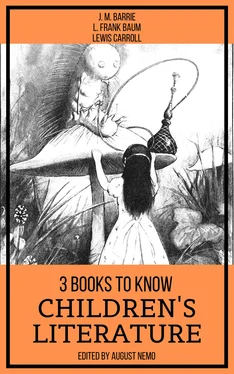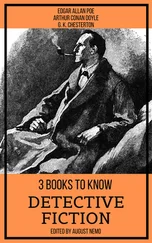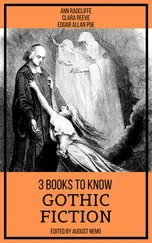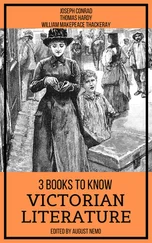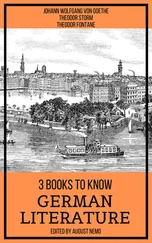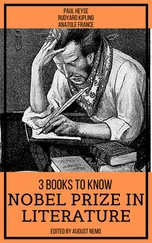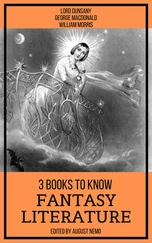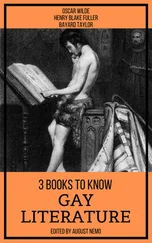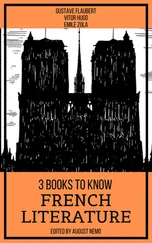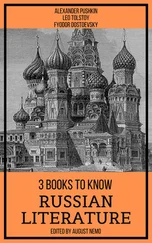1 ...7 8 9 11 12 13 ...18 So she set the little creature down, and felt quite relieved to see it trot away quietly into the wood. ‘If it had grown up,’ she said to herself, ‘it would have made a dreadfully ugly child: but it makes rather a handsome pig, I think.’ And she began thinking over other children she knew, who might do very well as pigs, and was just saying to herself, ‘if one only knew the right way to change them—’ when she was a little startled by seeing the Cheshire Cat sitting on a bough of a tree a few yards off.
The Cat only grinned when it saw Alice. It looked good-natured, she thought: still it had very long claws and a great many teeth, so she felt that it ought to be treated with respect.
‘Cheshire Puss,’ she began, rather timidly, as she did not at all know whether it would like the name: however, it only grinned a little wider. ‘Come, it’s pleased so far,’ thought Alice, and she went on. ‘Would you tell me, please, which way I ought to go from here?’
‘That depends a good deal on where you want to get to,’ said the Cat.
‘I don’t much care where—’ said Alice.
‘Then it doesn’t matter which way you go,’ said the Cat.
‘—so long as I get somewhere ,’ Alice added as an explanation.
‘Oh, you’re sure to do that,’ said the Cat, ‘if you only walk long enough.’
Alice felt that this could not be denied, so she tried another question. ‘What sort of people live about here?’
‘In that direction,’ the Cat said, waving its right paw round, ‘lives a Hatter: and in that direction,’ waving the other paw, ‘lives a March Hare. Visit either you like: they’re both mad.’
‘But I don’t want to go among mad people,’ Alice remarked.
‘Oh, you can’t help that,’ said the Cat: ‘we’re all mad here. I’m mad. You’re mad.’
‘How do you know I’m mad?’ said Alice.
‘You must be,’ said the Cat, ‘or you wouldn’t have come here.’
Alice didn’t think that proved it at all; however, she went on ‘And how do you know that you’re mad?’
‘To begin with,’ said the Cat, ‘a dog’s not mad. You grant that?’
‘I suppose so,’ said Alice.
‘Well, then,’ the Cat went on, ‘you see, a dog growls when it’s angry, and wags its tail when it’s pleased. Now I growl when I’m pleased, and wag my tail when I’m angry. Therefore I’m mad.’
‘ I call it purring, not growling,’ said Alice.
‘Call it what you like,’ said the Cat. ‘Do you play croquet with the Queen to-day?’
‘I should like it very much,’ said Alice, ‘but I haven’t been invited yet.’
‘You’ll see me there,’ said the Cat, and vanished.
Alice was not much surprised at this, she was getting so used to queer things happening. While she was looking at the place where it had been, it suddenly appeared again.
‘By-the-bye, what became of the baby?’ said the Cat. ‘I’d nearly forgotten to ask.’
‘It turned into a pig,’ Alice quietly said, just as if it had come back in a natural way.
‘I thought it would,’ said the Cat, and vanished again.
Alice waited a little, half expecting to see it again, but it did not appear, and after a minute or two she walked on in the direction in which the March Hare was said to live. ‘I’ve seen hatters before,’ she said to herself; ‘the March Hare will be much the most interesting, and perhaps as this is May it won’t be raving mad—at least not so mad as it was in March.’ As she said this, she looked up, and there was the Cat again, sitting on a branch of a tree.
‘Did you say pig, or fig?’ said the Cat.
‘I said pig,’ replied Alice; ‘and I wish you wouldn’t keep appearing and vanishing so suddenly: you make one quite giddy.’
‘All right,’ said the Cat; and this time it vanished quite slowly, beginning with the end of the tail, and ending with the grin, which remained some time after the rest of it had gone.
‘Well! I’ve often seen a cat without a grin,’ thought Alice; ‘but a grin without a cat! It’s the most curious thing I ever saw in my life!’
She had not gone much farther before she came in sight of the house of the March Hare: she thought it must be the right house, because the chimneys were shaped like ears and the roof was thatched with fur. It was so large a house, that she did not like to go nearer till she had nibbled some more of the lefthand bit of mushroom, and raised herself to about two feet high: even then she walked up towards it rather timidly, saying to herself ‘Suppose it should be raving mad after all! I almost wish I’d gone to see the Hatter instead!’
A Mad Tea-Party
There was a table set out under a tree in front of the house, and the March Hare and the Hatter were having tea at it: a Dormouse was sitting between them, fast asleep, and the other two were using it as a cushion, resting their elbows on it, and talking over its head. ‘Very uncomfortable for the Dormouse,’ thought Alice; ‘only, as it’s asleep, I suppose it doesn’t mind.’
The table was a large one, but the three were all crowded together at one corner of it: ‘No room! No room!’ they cried out when they saw Alice coming. ‘There’s plenty of room!’ said Alice indignantly, and she sat down in a large arm-chair at one end of the table.
‘Have some wine,’ the March Hare said in an encouraging tone.
Alice looked all round the table, but there was nothing on it but tea. ‘I don’t see any wine,’ she remarked.
‘There isn’t any,’ said the March Hare.
‘Then it wasn’t very civil of you to offer it,’ said Alice angrily.
‘It wasn’t very civil of you to sit down without being invited,’ said the March Hare.
‘I didn’t know it was your table,’ said Alice; ‘it’s laid for a great many more than three.’
‘Your hair wants cutting,’ said the Hatter. He had been looking at Alice for some time with great curiosity, and this was his first speech.
‘You should learn not to make personal remarks,’ Alice said with some severity; ‘it’s very rude.’
The Hatter opened his eyes very wide on hearing this; but all he said was, ‘Why is a raven like a writing-desk?’
‘Come, we shall have some fun now!’ thought Alice. ‘I’m glad they’ve begun asking riddles.—I believe I can guess that,’ she added aloud.
‘Do you mean that you think you can find out the answer to it?’ said the March Hare.
‘Exactly so,’ said Alice.
‘Then you should say what you mean,’ the March Hare went on.
‘I do,’ Alice hastily replied; ‘at least—at least I mean what I say—that’s the same thing, you know.’
‘Not the same thing a bit!’ said the Hatter. ‘You might just as well say that “I see what I eat” is the same thing as “I eat what I see”!’
‘You might just as well say,’ added the March Hare, ‘that “I like what I get” is the same thing as “I get what I like”!’
‘You might just as well say,’ added the Dormouse, who seemed to be talking in his sleep, ‘that “I breathe when I sleep” is the same thing as “I sleep when I breathe”!’
‘It is the same thing with you,’ said the Hatter, and here the conversation dropped, and the party sat silent for a minute, while Alice thought over all she could remember about ravens and writing-desks, which wasn’t much.
The Hatter was the first to break the silence. ‘What day of the month is it?’ he said, turning to Alice: he had taken his watch out of his pocket, and was looking at it uneasily, shaking it every now and then, and holding it to his ear.
Alice considered a little, and then said ‘The fourth.’
Читать дальше
